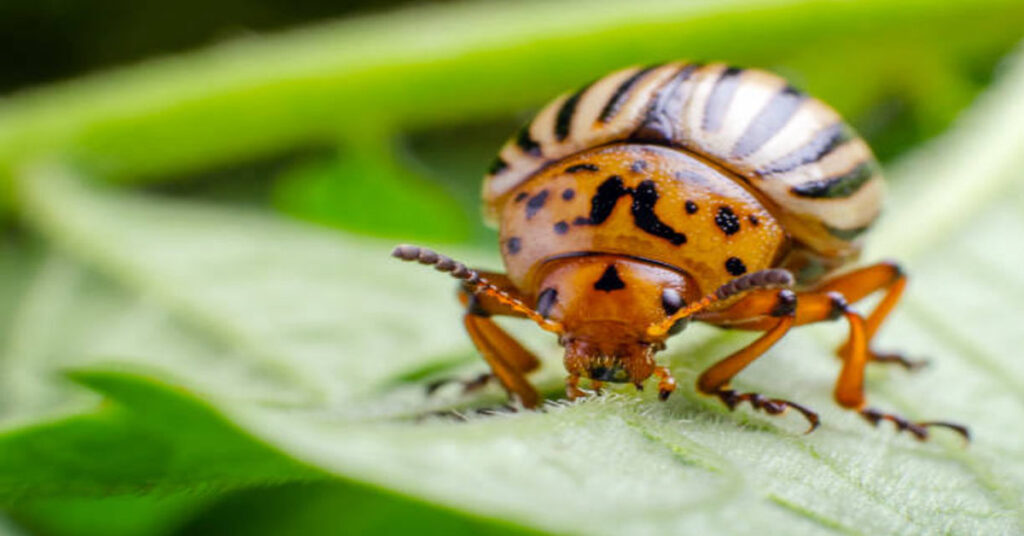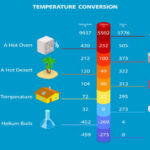Among the many insects that fascinate and sometimes frighten people, few attract as much curiosity and misunderstanding as the potato bug, scientifically known as Jerusalem cricket or Stenopelmatidae. Despite its intimidating appearance and name, this creature plays a valuable role in nature. The term “potato bug” is commonly used to describe two different types of insects depending on region and context: the Jerusalem cricket, which is a large, ground-dwelling insect native to the western United States, and the Colorado potato beetle, which is a well-known agricultural pest.
For this discussion, we will primarily focus on the Jerusalem cricket—an extraordinary insect that has both baffled and intrigued humans for centuries. From its unusual look and nocturnal lifestyle to its ecological significance and gentle demeanor, this insect embodies a unique balance between fear and fascination. Understanding the potato bug means delving into its biology, habits, and impact on both the ecosystem and human perception.
What Is a Potato Bug?
The term “potato bug” refers to a large, flightless insect with a rounded, human-like head and thick, spiny legs adapted for digging. Unlike typical beetles, potato bugs do not possess hard, shell-like wing covers or the ability to fly. They belong to the family Stenopelmatidae, a group of orthopteran insects closely related to grasshoppers and crickets.
One of the most recognizable traits of the Jerusalem cricket is its human-like face, often described as “baby-faced” or “alien-like.” It has a shiny, reddish-brown head, segmented body with alternating dark and light stripes on the abdomen, and large jaws used for feeding and defense. Although they appear fearsome, these insects are generally harmless to humans and prefer avoiding confrontation.
Scientific Classification of the Potato Bug
Understanding the scientific classification of the potato bug helps clarify its evolutionary position in the animal kingdom.
| Category | Scientific Information |
|---|---|
| Kingdom | Animalia |
| Phylum | Arthropoda |
| Class | Insecta |
| Order | Orthoptera |
| Family | Stenopelmatidae |
| Genus | Stenopelmatus |
| Common Names | Potato Bug, Jerusalem Cricket, Niño de la Tierra, Earth Baby |
This taxonomy places the potato bug among relatives like crickets, katydids, and grasshoppers—all known for their jumping legs and stridulating (sound-producing) abilities. However, unlike its musical cousins, the potato bug is relatively silent, communicating through drumming vibrations rather than chirping.
Physical Characteristics
Potato bugs are among the largest insects in North America. Adults typically measure 1.5 to 3 inches (3–7 cm) in length. Their physical build is designed for life underground—thick exoskeleton, strong legs, and specialized adaptations for digging.
Distinctive Features of the Potato Bug:
| Feature | Description |
|---|---|
| Head | Large, round, reddish-orange; resembles a small human face |
| Antennae | Long and segmented, used for detecting vibrations and scent |
| Legs | Powerful and spiny, built for burrowing through soil |
| Wings | Absent; potato bugs are flightless |
| Body Segments | Alternating light and dark brown bands on abdomen |
| Mouthparts | Strong mandibles for chewing plant roots and organic material |
| Size | 1.5–3 inches long; among the largest crickets |
The potato bug’s intimidating mandibles are used for feeding rather than aggression. While they can bite if provoked, they rarely attack humans and lack venom.
Habitat and Distribution
Potato bugs are native to western North America, particularly in dry, sandy, or loamy soil regions. They can be found from Mexico through the southwestern United States, especially in California, Arizona, New Mexico, and Utah. They prefer loose soil environments, such as gardens, deserts, fields, and under rocks or logs, where they can dig burrows easily.
Ideal Habitat Characteristics:
- Soil Type: Moist, loose, and well-drained for digging and nesting
- Temperature: Prefer mild climates and often emerge after rainfall
- Activity Time: Primarily nocturnal, avoiding sunlight and heat
- Shelter: Found under debris, stones, and decaying organic matter
These insects thrive in ecosystems rich in organic material, where they play an important role in decomposition and soil aeration.
Behavior and Lifestyle
Potato bugs are solitary and nocturnal, emerging at night to feed and explore. During the day, they remain hidden underground or under cover to protect themselves from predators and dehydration.
Feeding Habits
Contrary to their name, potato bugs do not specialize in eating potatoes. Their diet consists mainly of organic matter, including:
- Decaying roots and leaves
- Plant stems and tubers
- Dead insects and other decomposing matter
This makes them omnivorous scavengers that contribute to soil health by recycling nutrients. Occasionally, they may feed on young plant roots, which can lead to minor garden damage, but they are not considered serious pests.
Reproductive Behavior
Potato bugs have a unique mating process. Males and females communicate through drumming, where they tap their abdomens against the ground to send rhythmic vibrations through the soil. This behavior helps locate potential mates in the dark.
Females lay eggs underground, typically in moist soil. The eggs hatch into nymphs that resemble miniature adults but lack full coloration. Over time, they molt several times before reaching maturity—a process that may take several months.
Lifespan and Development
The average lifespan of a potato bug ranges from two to five years, depending on environmental conditions and predation. Unlike many insects, they grow slowly and have a prolonged developmental period.
Life Cycle Stages
| Stage | Description |
|---|---|
| Egg | Laid in soil; hatch within a few weeks |
| Nymph | Small, pale version of adult; undergoes several molts |
| Adult | Fully developed, sexually mature; lives underground and feeds at night |
Each stage plays a role in the insect’s survival, ensuring a balance between population growth and environmental contribution.
Potato Bug vs. Colorado Potato Beetle
The term “potato bug” sometimes causes confusion because it is also applied to the Colorado potato beetle (Leptinotarsa decemlineata), an entirely different species. To clarify, here’s a comparison between the two:
| Feature | Jerusalem Cricket (Potato Bug) | Colorado Potato Beetle |
|---|---|---|
| Scientific Family | Stenopelmatidae | Chrysomelidae |
| Appearance | Large, wingless, human-like head | Small, round, with striped yellow and black wings |
| Habitat | Underground in arid regions | Agricultural fields, especially potato crops |
| Diet | Decaying matter and plant roots | Potato leaves and other nightshades |
| Pest Status | Mostly harmless | Major agricultural pest |
| Mobility | Cannot fly | Capable of flight |
| Distribution | Western U.S. | North America, Europe, Asia |
Understanding the difference helps dispel myths and fears about potato bugs being harmful to crops or humans—they are ecologically beneficial, not destructive.
Ecological Importance
Though their appearance may evoke fear, potato bugs play a vital ecological role in maintaining soil health. They act as natural decomposers, breaking down organic material that enriches the soil and supports plant growth.
Their burrowing activity also aerates the soil, improving water retention and root development. In ecosystems with limited decomposers, the potato bug contributes significantly to the recycling of nutrients, making it an unsung hero of the underground world.
Additionally, potato bugs serve as a food source for birds, reptiles, and small mammals. This makes them a crucial part of the food chain, balancing predator-prey relationships within their ecosystem.
Potato Bugs and Humans
Despite their frightening look, potato bugs are non-aggressive and not venomous. If handled roughly, they may deliver a mild bite, but this rarely causes more than minor discomfort. They do not sting, spread disease, or infest homes like cockroaches or termites.
People often encounter them after heavy rains, when they emerge from the ground in search of drier shelter. Their presence in gardens is usually harmless and may even be beneficial due to their role in decomposing plant debris.
However, because of their appearance and nocturnal habits, they have inspired folklore and myths, particularly in Southwestern cultures. Some Spanish-speaking regions call them Niño de la Tierra (“Child of the Earth”) due to their large head and human-like face. In folklore, they were sometimes believed to carry spiritual meaning or bad omens—myths that persist even today.
Are Potato Bugs Dangerous?
In short—no, potato bugs are not dangerous.
Their intimidating look often leads to unnecessary fear, but scientifically, they are benign insects. They do not transmit diseases, destroy homes, or cause significant crop damage. If one bites, the sensation is comparable to a mild pinch or scratch, not a venomous sting.
The best way to deal with a potato bug found indoors is to gently scoop it up and release it outside. Since they are nocturnal, they prefer dark, moist environments, and will not survive long inside a home.
Natural Predators of the Potato Bug
Like many insects, potato bugs face natural predation from various animals. These include:
- Birds (such as owls and ravens)
- Snakes and lizards
- Small mammals (like rodents)
- Other insects and spiders
Their primary defense mechanisms are burrowing, camouflage, and their tough exoskeleton. When threatened, they may hiss or release a foul odor to deter predators, but they rarely attack.
Potato Bugs in the Ecosystem: A Closer Look
The potato bug’s role in the ecosystem is subtle yet essential. By consuming decaying organic material, it accelerates decomposition, which replenishes soil nutrients. This cycle supports sustainable plant growth and indirectly aids agriculture by maintaining soil fertility.
In ecological terms, potato bugs function as bioindicators—their presence in an environment often signals a healthy, balanced soil ecosystem. Their disappearance could indicate pollution, excessive pesticide use, or soil degradation.
| Ecological Function | Impact |
|---|---|
| Decomposition | Breaks down dead organic matter |
| Soil Aeration | Improves water and nutrient flow |
| Food Source | Feeds birds, reptiles, and mammals |
| Ecosystem Balance | Helps control organic buildup |
| Bioindicator | Reflects soil and environmental health |
Myths and Misconceptions
Many myths surround potato bugs due to their alien-like appearance. Some of the most common misconceptions include:
- Myth: Potato bugs are poisonous.
Fact: They are not venomous or toxic. - Myth: Potato bugs attack humans.
Fact: They are reclusive and only bite in self-defense. - Myth: They destroy potato crops.
Fact: The Jerusalem cricket rarely feeds on live plants. - Myth: They cry like babies.
Fact: Their “crying” sound is actually a hissing or stridulating vibration. - Myth: They can jump or fly.
Fact: Potato bugs neither jump long distances nor fly.
Understanding these facts helps promote appreciation for their ecological role rather than fear.
Conservation and Environmental Impact
Potato bugs are not endangered, but they are susceptible to environmental changes. Urbanization, pesticide use, and habitat loss threaten their populations. Since they rely on moist, undisturbed soil, activities like farming and construction can reduce their habitats.
Protecting these insects indirectly supports healthy soil systems. Organic farming, composting, and reduced pesticide use encourage populations of beneficial decomposers like the potato bug.
Interesting Facts About Potato Bugs
- They do not chirp like crickets but communicate by drumming on the ground.
- They can survive long periods underground without emerging.
- In some Native American traditions, they are considered symbols of rebirth and renewal due to their connection with the earth.
- Despite their fearsome appearance, they are among the most gentle and misunderstood insects.
- Their body structure has inspired robotic designs in scientific research for digging and soil exploration.
How to Handle or Remove Potato Bugs Safely
If you find a potato bug in your garden or home, there’s no need for alarm. The safest removal methods include:
- Using a container or paper to scoop it up gently.
- Releasing it outdoors in a shaded, moist area.
- Avoid using pesticides; these insects are beneficial decomposers.
Because they are not aggressive or destructive, there’s no reason to exterminate them unless infestations are severe—which is extremely rare.
Conclusion
The potato bug is a fascinating example of how nature’s most misunderstood creatures can hold profound ecological importance. Though often feared for its size and strange appearance, the Jerusalem cricket is an integral part of soil ecosystems—an insect that aerates, decomposes, and nourishes the earth quietly beneath our feet.
Recognizing the potato bug’s true nature helps dispel unnecessary myths and promotes coexistence with these gentle soil dwellers. By maintaining natural habitats, reducing pesticide use, and appreciating biodiversity, we ensure that even the smallest creatures continue contributing to the delicate balance of life on our planet.
The next time you spot a potato bug emerging from the ground, remember—it is not a threat but a symbol of nature’s hidden harmony and the quiet strength of life beneath the soil.
FAQs
1. Are potato bugs dangerous to humans?
No, potato bugs are not dangerous. They may bite if handled roughly, but their bite is not venomous or harmful.
2. What do potato bugs eat?
They are omnivorous scavengers that feed on decomposing plant roots, leaves, and organic matter, contributing to soil health.
3. Can potato bugs fly or jump?
No, they cannot fly and are poor jumpers. Their powerful legs are adapted for digging, not leaping.
4. Do potato bugs harm plants or crops?
Not significantly. While they may nibble on roots, they primarily feed on decaying material and are not major agricultural pests.
5. Why are they called “potato bugs”?
The name originated from their occasional appearance in potato fields, though they rarely eat potatoes. The name stuck due to their soil-dwelling nature.







